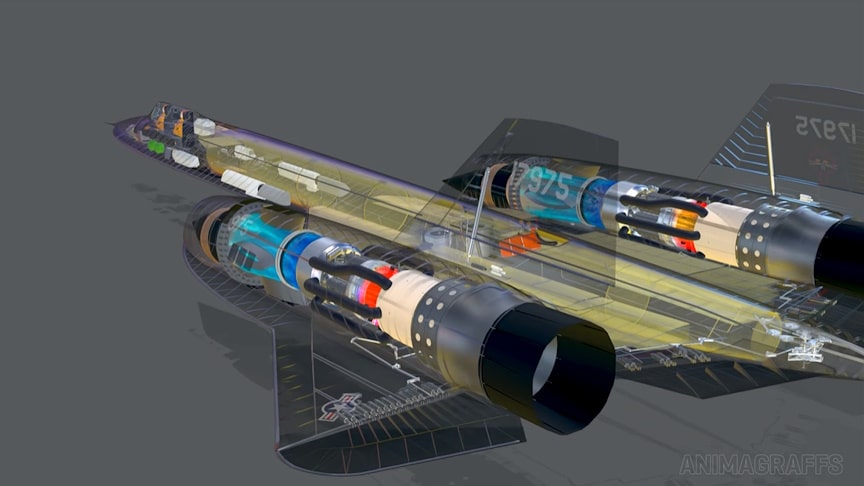An intensive and thrilling look inside the SR-71 Blackbird, one of aviation’s absolute greatest legends.The Lockheed SR-71 “Blackbird” is a retired long-range, high-altitude, Mach 3+ strategic reconnaissance aircraft developed and manufactured by the American aerospace company Lockheed Corporation.The shape of the SR-71 was based on that of the Lockheed A-12, which was one of the first aircraft to be designed with a reduced radar cross-section in mind.
source.image(PrtSc): Animagraffs
Mission equipment for the plane’s aerial reconnaissance role included signals intelligence sensors, side looking airborne radar, and a camera. The SR-71 was designed for flight at over Mach 3 with a flight crew of two in tandem cockpits, with the pilot in the forward cockpit and the reconnaissance systems officer operating the surveillance systems and equipment from the rear cockpit, and directing navigation on the mission flight path. Watch the video from Animagraffs:
The SR-71 was designed to minimize its radar cross-section, an early attempt at stealth design. The air inlets allowed the SR-71 to cruise at over Mach 3.2, with the air slowing down to subsonic speed as it entered the engine. Mach 3.2 was the design point for the aircraft, its most efficient speed.
Advertisement
The SR-71 was powered by two Pratt & Whitney J58 axial-flow turbojet engines. The J58 was a considerable innovation of the era, capable of producing a static thrust of 145 kN.The engine was most efficient around Mach 3.2,the Blackbird’s typical cruising speed. At the front of each inlet, a pointed, movable inlet cone called a “spike” was locked in its full forward position on the ground and during subsonic flight. When the aircraft accelerated past Mach 1.6, an internal jackscrew moved the spike up to 66 cm inwards, directed by an analog air inlet computer that took into account pitot-static system.











